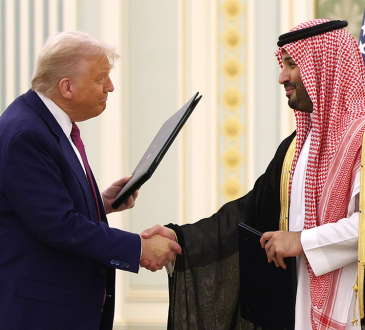A Sign of Hope and Unity: The Canonization of the Martyrs of Damascus by Pope Francis

As Pope Francis prepares to canonize the Eleven Martyrs of Damascus on October 20, the world will witness a historic moment of faith, hope, and ecumenism. These eleven men—eight Franciscan friars and three lay Maronites—were brutally martyred on the night of July 9, 1860, in Damascus, Syria, becoming witnesses to the resilience of Christianity in one of the world’s oldest Christian communities. Over 160 years later, their canonization offers renewed strength to Christians, particularly those in the Middle East, where they continue to face persecution amid ongoing conflicts.

Fr. Luke Gregory of the Custody of the Holy Land, in an interview with Vatican News, poignantly described their martyrdom as a sign of hope and a call for ecumenical unity. He explained that their sacrifice mirrors the suffering of many Christians in the Middle East today, where Christians now make up only 2% of Syria’s population, largely diminished by the country’s prolonged civil war.
Pope Francis’ decision to elevate these martyrs to sainthood comes at a time when the region is fraught with unrest, and their canonization speaks volumes about the power of faith and the importance of interreligious dialogue. In 2023, the Pope established the “Commission of New Martyrs—Witnesses of the Faith” to honor Christians who have died for their belief in Christ, crossing denominational lines and acknowledging martyrdom beyond Catholicism. Among those included were Coptic Christians who were tragically murdered in Libya, underscoring that martyrdom transcends religious divisions.
Fr. Gregory reflected on this poignant moment, describing it as a “new spring” of hope in the midst of bloodshed. He fervently believes that the intercession of these martyrs will inspire peace, not only in Syria but throughout the Middle East, where conflicts continue to ravage nations like Israel and Palestine. “After the bloodshed, there is a new spring,” he declared, underscoring the powerful message of resurrection and renewal that the canonization ceremony brings to light.
But beyond hope, the canonization of these martyrs carries a deeper message—one of unity and dialogue. Fr. Gregory expressed his belief that this significant event could pave the way for meaningful conversations between religious communities, offering a potential bridge to peace in the war-torn region. “The whole world will be looking,” he noted, urging that the canonization be a catalyst for open communication among different faiths.
The shrine dedicated to these martyrs, located at Batumah, stands as a place of pilgrimage and prayer. Currently undergoing renovations, the shrine will soon open its doors to the public, offering a space for reflection and homage. In July 2024, five large canvases, originally created in 1926 when Pope Pius XI beatified the martyrs, were unveiled, bringing their enduring legacy back into focus. Fr. Gregory hopes that one day, when peace is restored in the Middle East, pilgrimages to the Holy Land and to the shrine of these martyrs will become a widespread practice, connecting believers across the globe to the powerful testimony of these eleven men.
As the world watches on October 20, Pope Francis’ act of canonizing these martyrs serves as a beacon of hope for all Christians, especially those still facing persecution. Their sacrifice is not only a reminder of the cost of faith but also a call to unity, peace, and the resilient spirit of Christianity, even in the most turbulent of times.




